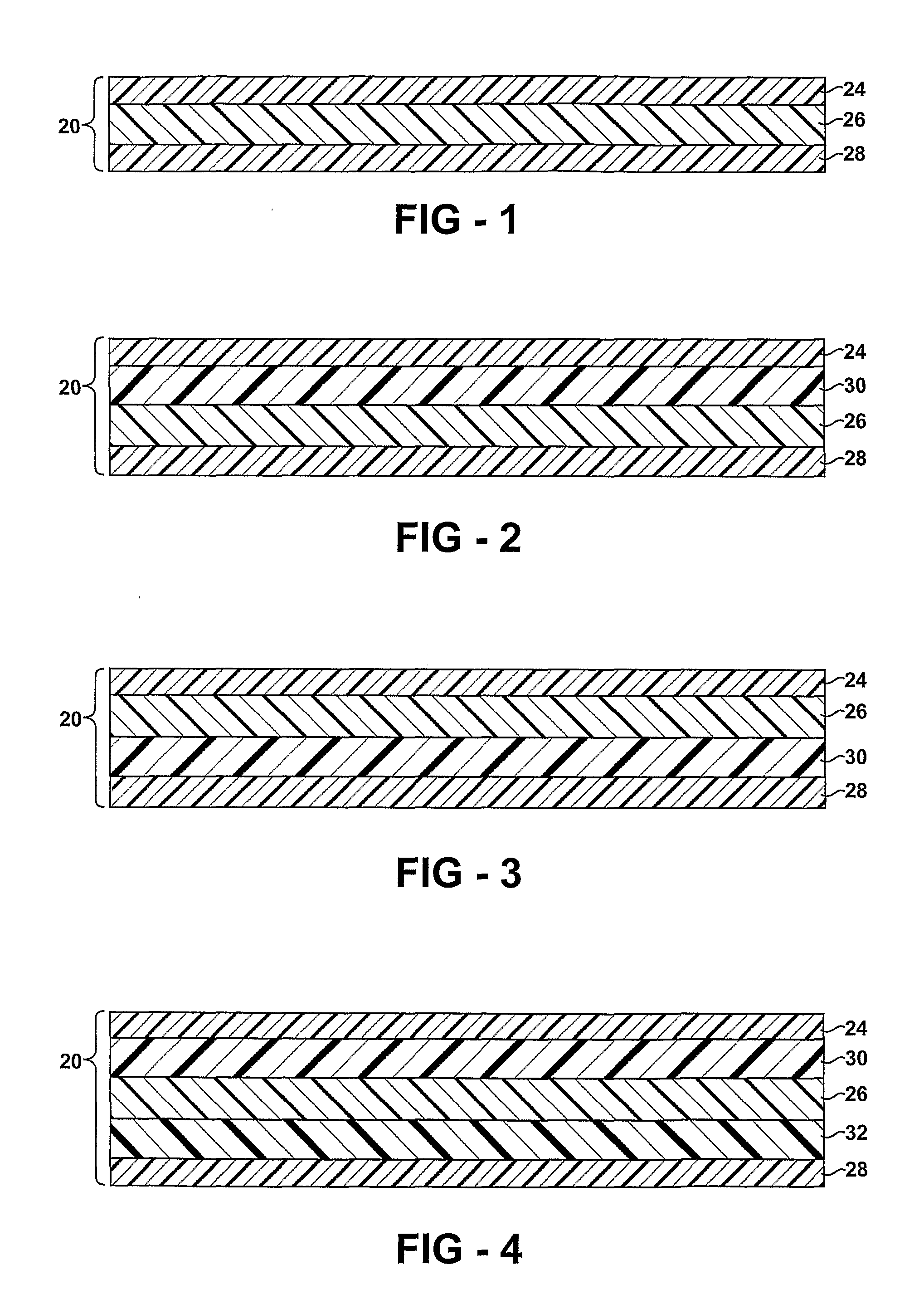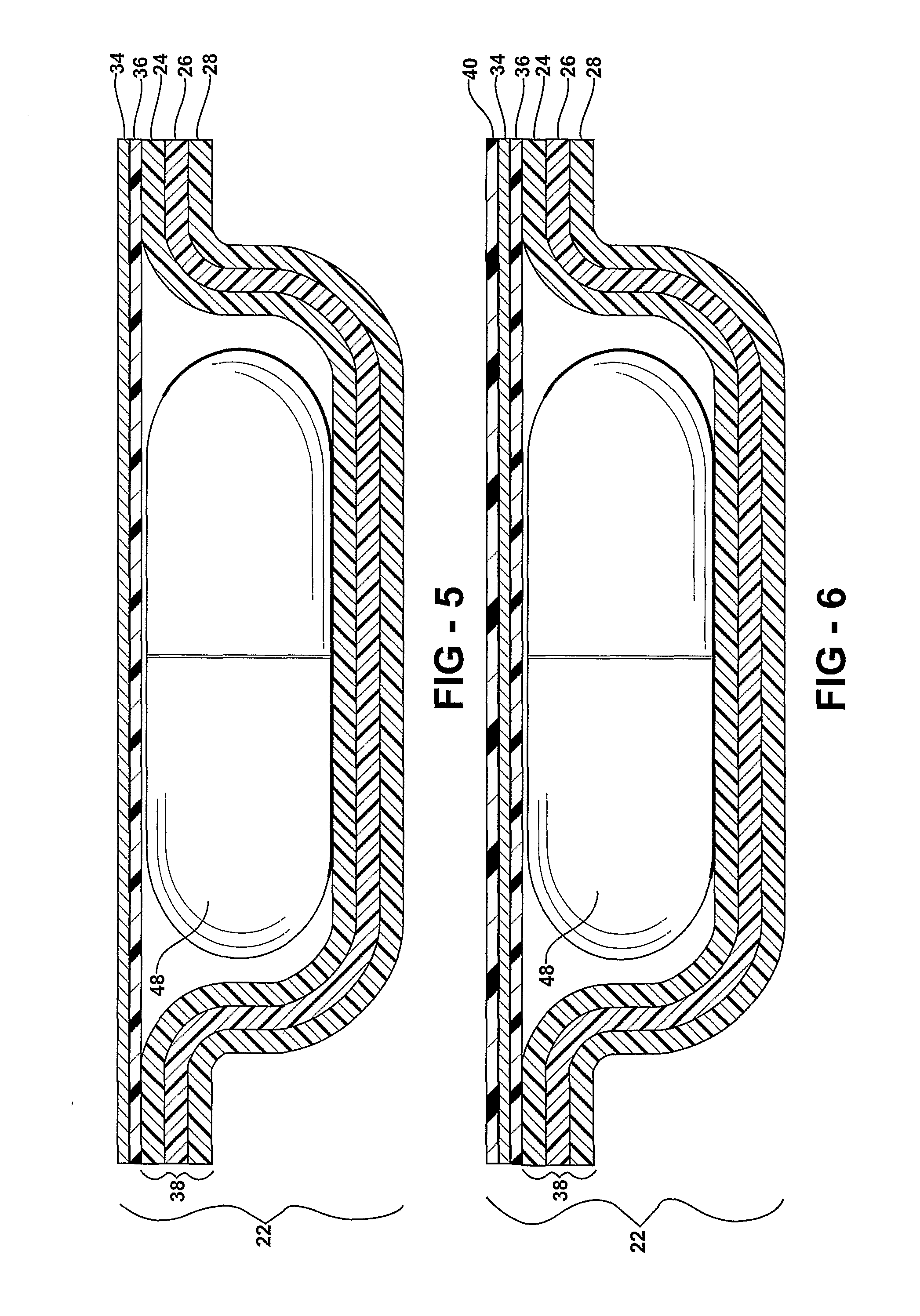Multilayer Films Including Cycloolefin Copolymer and Styrene-Butadiene Copolymer
- Summary
- Abstract
- Description
- Claims
- Application Information
AI Technical Summary
Benefits of technology
Problems solved by technology
Method used
Image
Examples
Embodiment Construction
[0038]The present invention is described in detail below with reference to the various examples and appended Figures. Modifications to particular examples within the spirit and scope of the present invention, set forth in the appended claims, will be readily apparent to those of skill in the art.
[0039]Unless otherwise indicated, terms are to be construed in accordance with their ordinary meaning. Following are some exemplary definitions of terms used in this specification and the appended claims.
[0040]The terms “film” and “sheet” are used interchangeably. Sheet may be used to refer to film that is thicker than 100 microns in some instances. “Mils” refers to thousandths of an inch and may refer to a film thickness.
[0041]As used herein, the phrase “directly melt-bonded” is defined as application of a subject film layer to an object film layer, without a tie layer, adhesive, or other layer in between, where the layers are adhered to one another when in a molten or partially softened st...
PUM
| Property | Measurement | Unit |
|---|---|---|
| Temperature | aaaaa | aaaaa |
| Temperature | aaaaa | aaaaa |
| Temperature | aaaaa | aaaaa |
Abstract
Description
Claims
Application Information
 Login to View More
Login to View More - R&D
- Intellectual Property
- Life Sciences
- Materials
- Tech Scout
- Unparalleled Data Quality
- Higher Quality Content
- 60% Fewer Hallucinations
Browse by: Latest US Patents, China's latest patents, Technical Efficacy Thesaurus, Application Domain, Technology Topic, Popular Technical Reports.
© 2025 PatSnap. All rights reserved.Legal|Privacy policy|Modern Slavery Act Transparency Statement|Sitemap|About US| Contact US: help@patsnap.com



